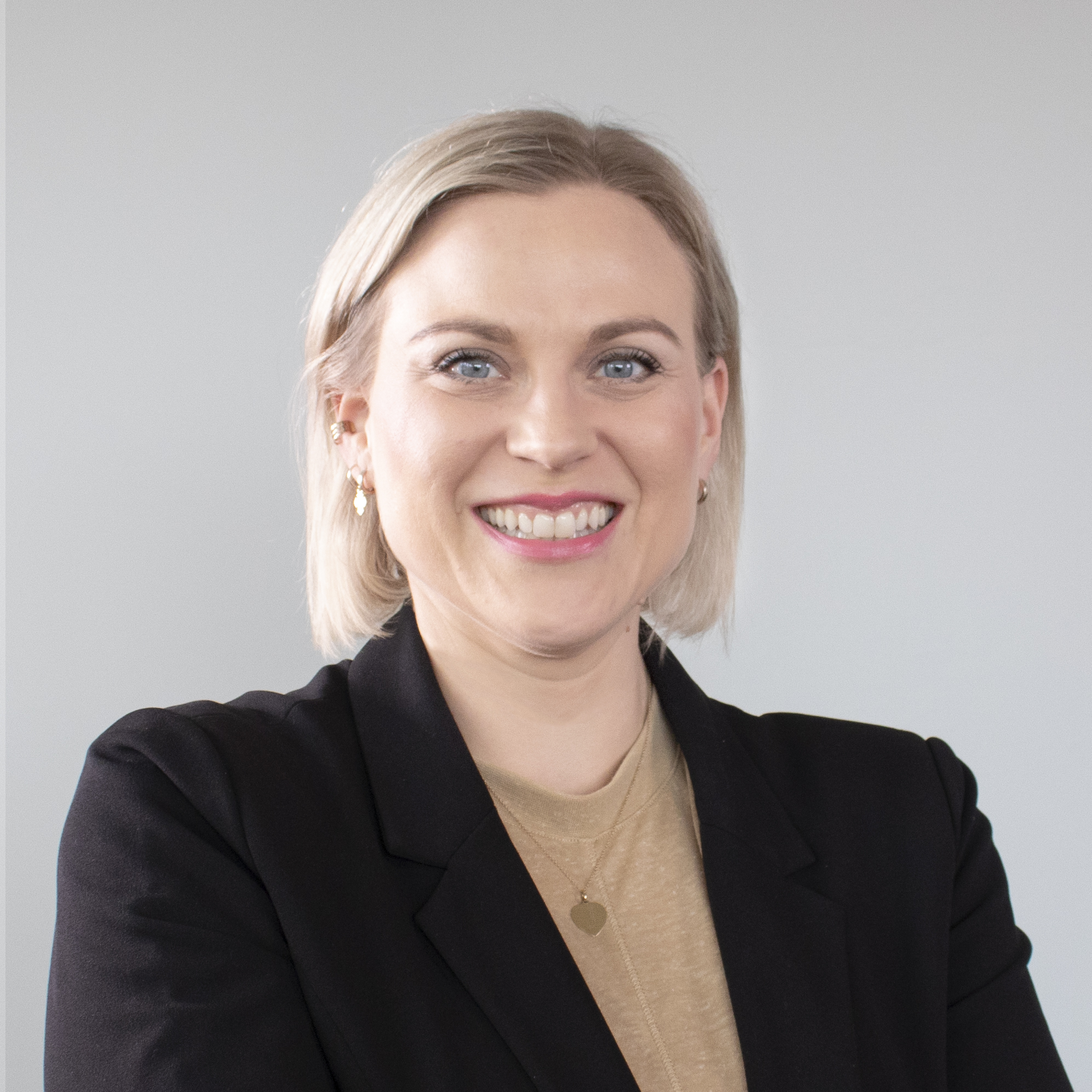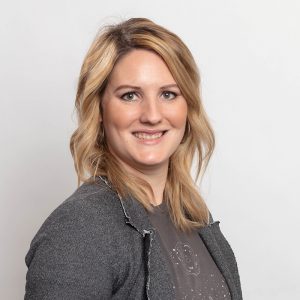
“Diversity must be reflected in the results. Greater success through greater diversity.”
An interview with imc Executive Board Members Christian Wachter, Dr. Wolfram Jost und Sven R. Becker
Diversity and inclusion (D&I) are topics we should all pay attention to. They are widely discussed in the working world, in sports and on social media.
Companies realised at an early stage that proactive D&I management also brings benefits for them. After all, diverse teams have proven to boost productivity and enhance business outcomes. Moreover, companies can only secure the greatest talents if they recruit from a diverse environment.
imc also understands diversity as a driver for innovation. What exactly does that mean? We asked the imc Executive Board.

Executive Board imc: Christian Wachter, Sven R. Becker, Dr. Wolfram Jost
Thank you for taking the time. Let’s start with a personal question: How do you understand diversity and inclusion?
Christian: Diversity and inclusion means to go beyond being tolerant, and actually accept those who are different.
Wolfram: I agree. Diversity means accepting different backgrounds, because they are the basis for our life.
Sven: And diversity creates friction, positive friction. Friction can promote innovation. Thus, an inclusive and diverse organisation promotes innovation processes which are already difficult to control in themselves.
Where do you see a specific need for action in relation to diversity and inclusion at imc?
Christian: We are developing more and more into a global company with global teams. Interaction and teamwork across countries and cultures is becoming one of the greatest challenges of the near future. Thus, treating each other with respect and consistently setting a good example is crucial.
Wolfram: I believe we do take this topic very seriously at imc, and we are making a great effort to exemplify diversity. Many teams comprise employees with different backgrounds. We actively practice and shape the concept on many fronts, including our Diversity Week.

Let’s venture a look into the future: How will diversity and inclusion be practiced at imc in five years’ time?
Wolfram: That is difficult to predict. Our objective is to establish diversity as a driver and a key component of our corporate culture. We will actively manage diversity. If we grow sufficiently, we might have a Chief Diversity Officer by then.
Sven: We will know that we understand when we no longer need to talk about it. Diversity and inclusion must be absorbed into our DNA, and become routine like the small talk at the coffee machine. Yes, I do believe that we can achieve that objective in five years from now.
Christian, how does the imc approach to D&I stand out from other companies?
Christian: With nearly 50 nationalities at twelve locations around the globe, we are already an intercultural company. That is something special.

Wolfram, which specific aspects of the imc value chain can D&I improve?
Wolfram: People’s background already differs at birth. Based on these differences, they will also have a different set of strengths and weaknesses. Diversity means that these differences within a team create a synergy effect – people complement each other and achieve better results together. That is why our value chain will continue to benefit from diverse teams.
Sven, imc employees represent more than 50 nations. Which measures does imc take to promote diversity and inclusion? Is there one measure particularly close to your heart? Why?
Sven: The number of nations is not what makes an organisation diverse and inclusive. Say I have employees from 100 nations, but they are all married male Java developers between 30-40 years old – that organisation could not be further removed from being diverse. That is why understanding diversity in a wider context is really important to me. Based on that understanding, we can then explore the opportunities this brings – of course, that is an ongoing process.

What is the difference between the way diverse and non-diverse teams work? What makes diverse teams better? We have to determine the essence of this. As a Board Member, I also want to seize opportunities: Diversity must be reflected in the results. Greater success through greater diversity. This, I believe.

Diversity inspires
The diversity of our employees from more than 49 nations makes us what we are: a Saarland brand at home in the world. Our clients around the world are diverse – so are our teams. Every single day they succeed in enabling individuals and organisations worldwide to unleash their full potential in a continuously changing world.
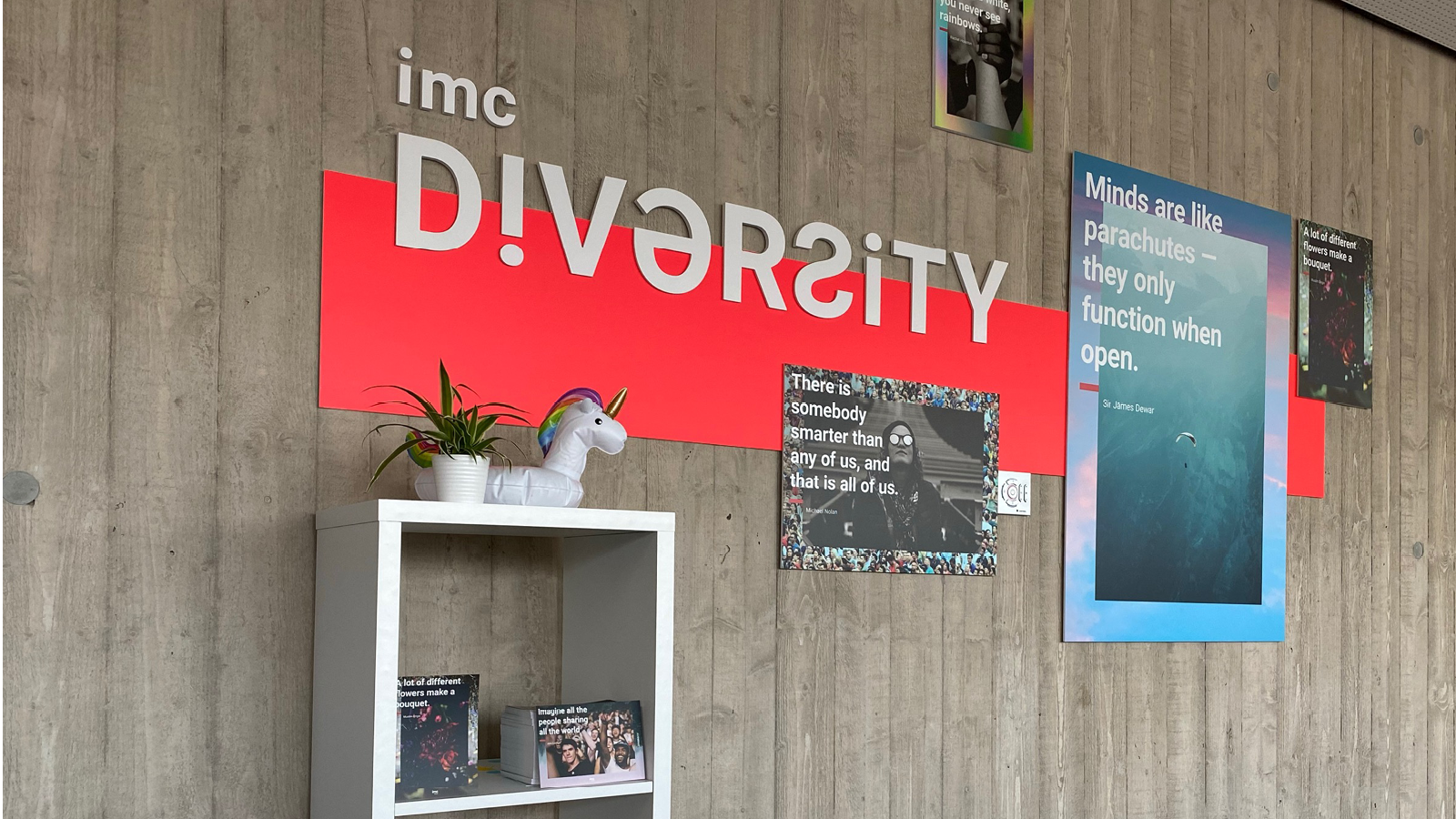
Diversity and inclusion at imc
What does Diversity and Inclusion mean at imc? And what is the "Diversity Corner" in the headquarter in Saarbrücken about? We will enlighten you in the interview with Kerstin Steffen.
Contact
I joined the imc newsroom team in 2021. As a journalist my heart beats for content and storytelling.
I’m excited to figure out how e-learing and digitization affect the future of work. My task is to create content to talk about and I’m always looking for trends.
Privately I love to travel and eat Tapas.
Topics: E-Learning Trends, Corporate Social Responsibility, Press and Influencer Relations

Dismantling unconscious prejudices and appreciating diversity in the company
Tips for dealing with unconscious bias - Interview with Vanessah Aurore Reck
The tricky thing about unconscious bias is our failure to acknowledge that it is part of human nature to apply stereotypes in our thought processes. We all have stereotypical expectations, as well as prejudices. The more we acknowledge that, the more we can reflect on it and the better we can handle it. That is why we invited Vanessah Aurore Reck for International Diversity Day. She is offering an impulse session on unconscious bias to our employees. I met with her in advance to discuss these topics, as well as diversity and inclusion in general.

INFO
Vanessah Aurore Reck teaches intercultural management at Saarland University in Saarbrücken. She is currently writing her PhD thesis on integration. She has a thematic and personal connection to the topic.
Vanessah grew up in Madagascar. She moved to Germany at the age of 12, and continued her studies there. After graduating from high school, she studied intercultural communication, Spanish and law in Saarbrücken. She explains that this sparked her passion for intercultural issues.
Working on her PhD thesis, she is examining which factors contribute to successful integration.
Hello Vanessah! Thank you for taking the time. I will start with my first question: What does diversity and inclusion mean for a company? What benefits does active D&I management bring?
That depends on the corporate culture. Is it still necessary to use diversity as a selling point to attract good applicants? Or has it already become standard practice? In fact, maybe diversity no longer is the actual topic, but rather the corporate culture itself? Having a culture in which all employees thrive regardless of their backgrounds and such?
I’m under the impression that these topics have not yet been discussed in such breadth in Germany, as has been the case in the USA or other English-speaking countries. Thus, companies in Germany should ask themselves what role diversity plays in their own corporate culture and the company’s identity. For example, diversity might be of greater significance for companies with global operations where communication is key. However, no company should have to put diversity and inclusion on the agenda – at least not beyond the legal requirements. A far more interesting question for a company might be: How can diversity help an organisation achieve its goals?

You are going to talk about the issue of unconscious bias. How would you define that term?
The term is originally rooted in psychology. However, I tend to focus on the cultural science component, and the reasons for its significance in an intercultural working environment. We have to remember that a bias is typically based on stereotypes and prejudices. In most cases, it is an attitude that we are not aware of, but this unconscious perception can lead to conscious discrimination.
This transition from unconscious to conscious is what creates issues. That is when you arrive at an extreme attitude, such as racism. It is important to differentiate these terms clearly.

At what point is it important for a company to deal with this topic?
It becomes crucial when a global corporation like Google strives to attract the crème de la crème of employees. Clearly, this crème de la crème is not just composed of white 50-year-old men. It is very diverse. It goes without saying that the company must create a suitable working environment if it wants to acquire such top talents. Taking this further, evaluating this issue is equally beneficial to companies seeking to attract outstanding candidates in other contexts.
The key is to reflect on one’s own unconscious bias – both on an organisational and on a personal level. Thus, awareness needs to be created.
Can you offer practical tips for dealing with unconscious bias?
The standards proposed by the scientific community sometimes appear engineered. Tools like intercultural training or workshops might be of interest. However, this typical form of training has also garnered criticism, as there is concern that they also encourage the reproduction of stereotypes. Nevertheless, such training is a good starting point for creating awareness for the topic, to make people appreciate its importance and spark an interest.
Also, there is more specialized training on unconscious bias that is based on psychological tenets and is therefore empirical in nature. However, that necessitates access to tools for understanding these empirical findings and transforming them into specific actions.
The Harvard Implicit Association Test takes yet another approach. It basically measures how unconsciously biased an individual is.
Personally, I believe it is important to strengthen the communication relating to this topic within the company; to create a shared culture with all employees that also offers safe spaces. This establishes a point of contact for victims of discrimination while also providing a platform for other employees to express their insecurities.
What specific actions would you say managers can employ to minimise bias within their teams?
Participation and communication. Examining and analysing internal processes from a new perspective while involving the affected minority groups.

Cultural Diversity: Working in an intercultural company
Let's have a look at our London and Singapore offices. There are 13 different nations working together in diverse teams.

A plea for diverse learning content
Diversity is increasingly becoming a hygiene factor in our working world. E-Learning Content Project Manager Kenny appeals: “The diversity you want must also be reflected in your learning content.”
Contact
I joined the imc newsroom team in 2021. As a journalist my heart beats for content and storytelling.
I’m excited to figure out how e-learing and digitization affect the future of work. My task is to create content to talk about and I’m always looking for trends.
Privately I love to travel and eat Tapas.
Topics: E-Learning Trends, Corporate Social Responsibility, Press and Influencer Relations

Because cultural diversity enriches us
Meeting for a coffee with our colleagues in London and Singapore
It is now widely accepted that a relationship between diversity and business success exists. Studies prove that greater diversity equals greater success. On top of that, employees also benefit from an open corporate culture.
A dedicated crew has formed at imc to further drive diversity and inclusion. The objective: making a mark for diversity.

49 nationalities across 12 locations
Our offices are spread across the world – across 12 international locations to be precise. Here, 49 nations are collaborating. Today, we will take a closer look at two of our offices. To this end, we met for a virtual coffee with Francisca Lim, Brand Manager at imc Singapore and Gijs Daemen, Brand Manager at imc UK.
In London, 15 employees of 8 different nationalities are working together. 7 employees of 5 nationalities share the Singapore office.

Francisca Lim, Regional Brand Manager, imc Singapore
Francisca, you work in Singapore, but you are from Indonesia. Would you say that there are any differences in the working culture?
The working culture in Singapore is more independent compared to Indonesia. There is an Indonesian term called “gotong royong” or “working together” where everybody is expected to help each other and sharing the burdens. It’s more prevalent in Indonesian work culture than in Singapore. Besides this, there is no distinction between office friends and office colleagues in Indonesia, which is not the same in Singapore. Hence it’s scarce that we can develop a closer bond with our office colleagues in Singapore.
Gijs, you work in London, but you are Dutch. What was the most “shocking” moment for you after moving to the UK?
I can’t think of anything really “shocking”, but I’m very aware of the differences in communication styles. Dutch people tend to be quite direct. In the Netherlands it is seen as being honest and/or being efficient. However, in the UK that directness might come across as rude or disrespectful. So that is definitely something to be aware of.

Gijs Daemen, Brand Manager, imc United Kingdom
Is the communication between all of you always in English in the office?
Francisca: Even though the national language in Singapore is Malay, the main language is English. The other official languages are Chinese (Mandarin) and Tamil, besides other dialects such as Cantonese, Hokkien, Hainanese, Hakka and Teochew. Most of the people speak English or sometimes it can be called “Singlish”, a variety of English spoken in Singapore incorporating elements of Malay, Cantonese and Hokkien. There are common words that I never heard before I came to Singapore, such as “lah”, “leh”, “walau”, “blur”. I couldn’t understand the conversation clearly in the beginning, but it’s much better now. However, we speak formal English, not Singlish, in the imc Singapore office.
Gijs: Yes, most of the time it is. A few people speak Dutch though, so sometimes we can switch. German people might be able to follow a Dutch conversation a little bit, but most English speakers won't understand a single word.
Gijs, was there any funny moment, for example a misunderstanding because of the different mother languages?
Our Dutch colleague Tanja loves to use random Dutch words or expressions in English conversations. That can be quite funny, at least for the Dutch speakers among us. I’m not sure what the others think…
Do you see the fact that 49 nations work together at imc as a hurdle or an enrichment?
Francisca: Team members with diverse backgrounds will bring diverse solutions to the table, which leads to a more informed decision-making process and improved results. Harvard Business Review found that diverse teams are able to solve problems faster than teams of cognitively similar people. But there are challenges as well, such as overcoming bias. Studies show that the vast majority of human decisions are based on biases, beliefs, and intuition - not facts or logic. Even with the best intentions, people tend to bring bias into their everyday interactions, including in the workplace.
How do you experience the diversity management at imc, are there still challenges?
Francisca: imc is the only company I joined that has been supporting diversity and inclusion that much, with so many activities and working groups to achieve a better result. I wish that we all keep the momentum going and involve more people in diversity and inclusion activities. There are not many big challenges working in diverse teams as long as we understand each other, share our experiences, learn from each other and understand our differences.


Diversity inspires
The diversity of our employees from more than 49 nations makes us what we are: a Saarland brand at home in the world. Our clients around the world are diverse – so are our teams. Every single day they succeed in enabling individuals and organisations worldwide to unleash their full potential in a continuously changing world.

Diversity and inclusion at imc
What does Diversity and Inclusion mean at imc? And what is the "Diversity Corner" in the headquarter in Saarbrücken about? We will enlighten you in the interview with Kerstin Steffen.
Contact
I joined the imc newsroom team in 2021. As a journalist my heart beats for content and storytelling.
I’m excited to figure out how e-learing and digitization affect the future of work. My task is to create content to talk about and I’m always looking for trends.
Privately I love to travel and eat Tapas.
Topics: E-Learning Trends, Corporate Social Responsibility, Press and Influencer Relations

We celebrated International Women's Day 2021
For an understanding of diversity and inclusion we need to talk about bias first
Our team across Melbourne took the International Women's Day as an opportunity to consider diversity, inclusion and equality. The mission: challenging themselves to think about how biases can influence our professional and personal decision making.
International Women’s Day has been a conversation since 1911 and in Australia the gender pay gap is still 13.4%* and there are more CEOs named Andrew (7%) than there are female CEOs (5%) of our top 200 publicly listed companies. (*Australia Bureau of Statistics (2021), Average Weekly Earnings, November 2020, cat. no. 6302.0, viewed 25 February 2021)

In general, there are fewer women employed in technology driven businesses. While at imc we already have comparatively larger percentage of female-identifying staff, we acknowledge that we need to continue to develop and promote initiatives like our ‘Women in Leadership’ program with a view to increasing the number of women we employ.
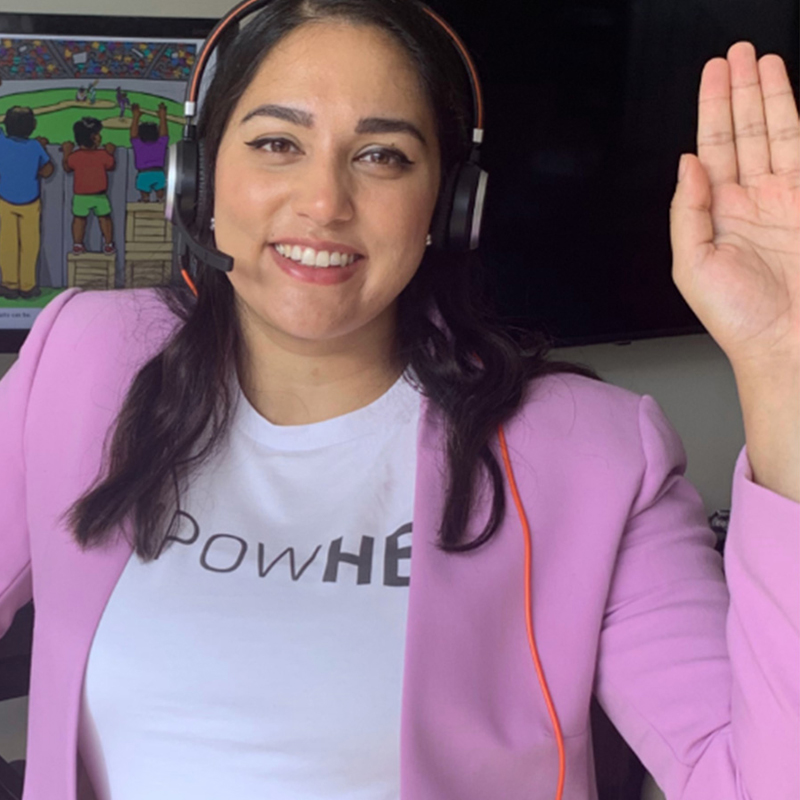
Samantha Mathews
Samantha, instructional designer at imc Australia and part of the imc Diversity and Inclusion Crew, hosted an internal event for her colleagues and talked about diversity, inclusion and why it is important to consider our own biases.
She has been working with a government client on an e-learning solution around family violence risk, an issue that disproportionately impacts women and felt that International Women’s Day was a good opportunity to share what she has learned on this project with the rest of the team.
Samantha, why was it so important for you to celebrate International Women’s Day at the imc office in Australia?
International Women’s Day is a great opportunity to start or re-start the conversation around the social and economic issues that impact half of the workforce.
How did you incorporate this years’ International Women’s Day theme #ChooseToChallenge?
We had a conversation, watched videos, and did an activity around bias, intersectionality, and inclusion. I think people came to their own understanding that “choosing to challenge” is about each of us, as individuals, checking our own biases and speaking up so that collectively, we can contribute to wider conversation about diversity and inclusion.
When we talk about these topics internally, we have an opportunity to reflect and learn which in turn allows us to provide a better, more inclusive service as e-learning providers.

Corporate Social Responsibility
Want to know more about Corporate Social Responsibility and what it means for us at imc? Find out more about our pillars and what we do.

Diversity and Inclusion at imc
What does Diversity and Inclusion mean at imc? And what is the "Diversity Corner" in the headquarter in Saarbrücken about? We will enlighten you in the interview with Kerstin Steffen
Contact
I joined the imc newsroom team in 2021. As a journalist my heart beats for content and storytelling.
I’m excited to figure out how e-learing and digitization affect the future of work. My task is to create content to talk about and I’m always looking for trends.
Privately I love to travel and eat Tapas.
Topics: E-Learning Trends, Corporate Social Responsibility, Press and Influencer Relations

Communication is no second thing
At the annual kick-off, the imc brand ambassadors learned from true professionals what personal branding really means and why communication must be more than just an afterthought.
How can I position myself as a brand ambassador in my company? How do I find my topics? What exactly is that widely discussed personal branding all about?
To discuss these and new topics for 2021, the imc brand ambassador crew of around 30 members, met for the virtual annual kick-off in early February. As a special highlight, Steffi Tönjes and Karim Cheranti from Deutsche Telekom presented their perspective of personal branding.

Telekom Ambassadors share insights
Following the welcome by imc Executive Board Member Sven R. Becker, who has supported the programme from the start, two special guests were waiting for the group: Steffi Tönjes and Karim Cheranti work in Corporate Communications at Deutsche Telekom and are part of one of the biggest and most well-known brand ambassador programmes.
Karim and Steffi take a clear position on their topics on social media, and discuss issues like communication, TikTok, social media in general, as well as female empowerment.
Personal branding means personal development
Personal branding was also the keyword they both talked about. In their presentation, they show that it is more than just a buzzword. After all: Personal branding is not about marketing yourself, but about personal development.
To say it with Jeff Bezos: "Personal branding is what people say about you when you are not present." Their simple tip for checking what is known about you is to google yourself.
Steffi and Karim then offered a few tips to the imc ambassadors on where to start with becoming your own personal brand. Setting clear objectives is key, and that includes having a clear concept of the topics you want to talk about and what concerns you.
Next, an opinion leader on these or related topics needs to be identified, so that you can examine how you can be different. You might also benefit from a challenge with another colleague – for example on how often something should be posted.
Communication is a must, not an option
Both speakers were very clear on one appeal: Communication must be more than just an afterthought! All too often, we hear the excuse that there was no time for communicating or explaining certain topics.
Karim argued that transparent communication is key – especially, but not only for managers. It is necessary for getting employees on board, exchanging ideas and obtaining feedback, as well as for creating networks with others.
Brand ambassadors are not just an external function
Following the presentation by Steffi and Karim and a Q&A session, the imc ambassadors were split into two groups. The imc brand ambassadors want and should address both external and internal stakeholders, and also strengthen internal communication and networking.
Thus, the first group examined how internal collaboration and networks can be strengthened. The ambassadors felt that especially the exchange between different divisions should be approached strategically and intensified. They discussed various informal and rather formal formats serving this objective, such as job shadowing, play days and even a second internal BarCamp.
The second group looked at a digital imc roadshow. Originally, the idea was to use it for increasing awareness of the different locations and introduce them internally. However, the group quickly agreed that it would be better to also open the format to external stakeholders – so that customers can see what makes each location special, and what core topics each location is addressing.
Maintaining momentum
Now, the results of those discussions must be put into action, maintaining the momentum. That is also what Kerstin Steffen, Head of Global Marketing and Communications at imc wants, who started the programme.
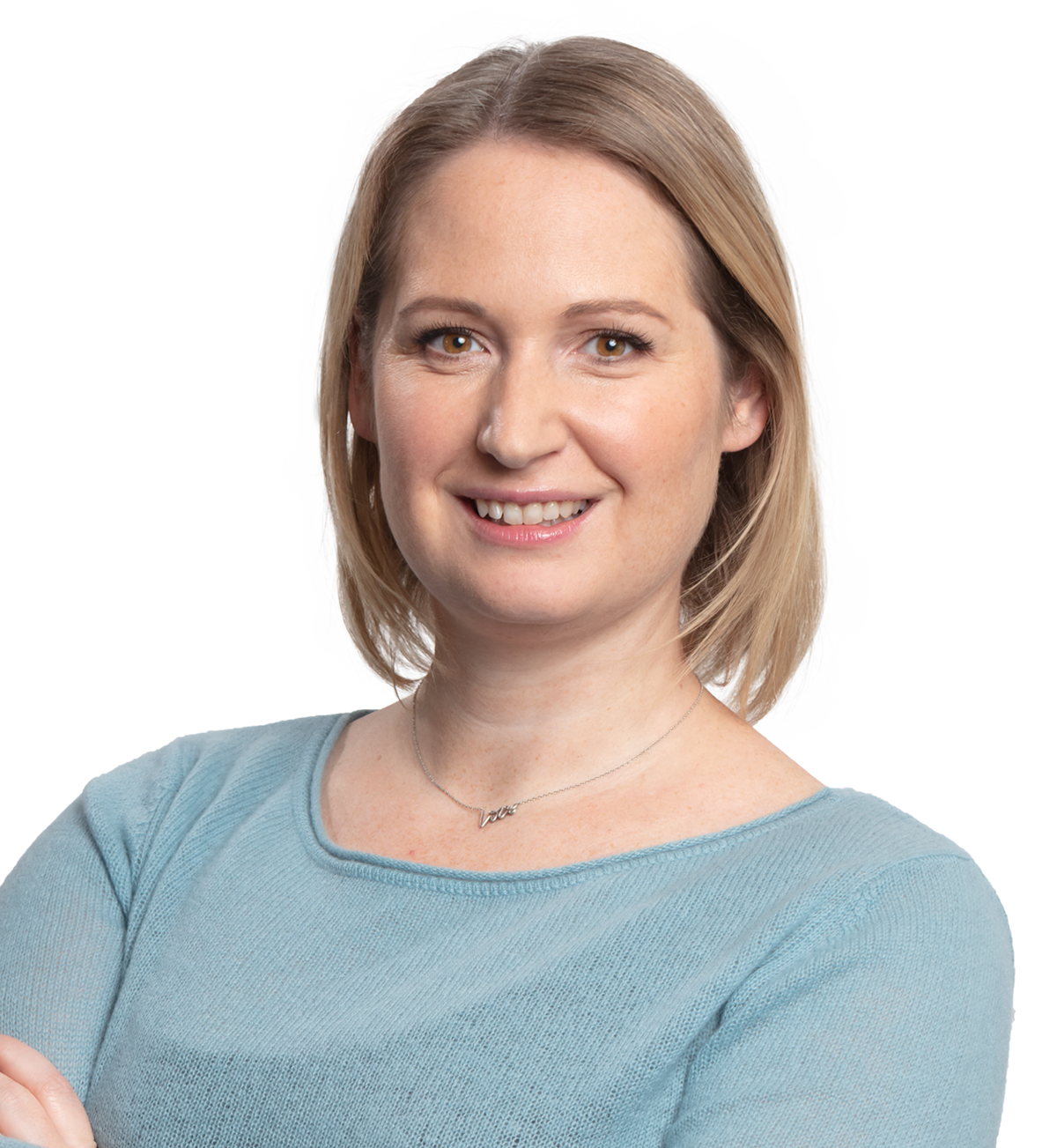
She sums up: “We will pass all ideas and requests on to our Executive Board, and develop the concept proposals. It is very important to us that we can show our ambassadors and all other employees that we value their ideas and do our best to realise them.
We are thrilled that our employees continue to play an active role and that the team keeps welcoming new members. It goes to show how important these topics are for our colleagues.”

More than just selfie overload
Take a look behind the scenes of the imc's Ambassador Program and learn more about why our employees' hearts beat for the corporate brand.

A plea for diverse learning content
Diversity is increasingly becoming a hygiene factor in our working world. E-Learning Content Project Manager Kenny appeals: “The diversity you want must also be reflected in your learning content.”
Contact
I have been working in the imc Marketing & Communication team since March 2019.
I am passionate about communication, creative content, networking and social media.
Explaining complex content in simple terms and making e-learning accessible to everyone are challenges that make every day exciting.
In my time off, I like to read, play poker and travel a lot.
I am always happy to receive feedback or suggestions: nadine.kreutz@im-c.de.
